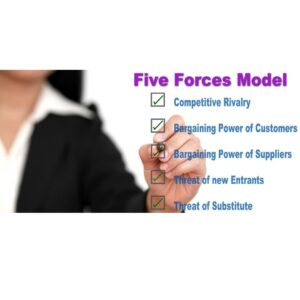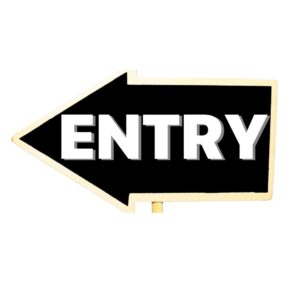Five Forces-The Porter Five Forces analysis methodology was initially published in Harvard Business Review in 1979 by Harvard Business School professor Michael E Porter. The publishing of this document has historically altered firms’, organisations’, and even governments’ understanding of strategy. Since its beginnings, it has been rated one of the ten most influential papers in Harvard Business Review.
A Five Forces study can assist businesses in determining market attractiveness, how trends will effect industry competitiveness, which industries a company should compete in—and how businesses can position themselves for success.
Five Forces Analysis is a strategic tool, not a thorough business analysis technique, that provides a global viewpoint. It aids in reviewing a market position’s strengths based on five major forces. Thus, Five Forces is most effective when applied to a whole market sector rather than your own company and a few competitors.
14 Travel-Involved Jobs
What exactly is the Five Forces Model?

The core notion of this model is that the profitability (industry attractiveness) of the industry in which the enterprise is based and the relative competitive position of the enterprise in the industry are the keys to an enterprise gaining a competitive advantage. As a result, strategic management’s major responsibility is to identify potentially profitable industries by examining five factors: suppliers, buyers, present competitors, alternative products, and new entrants. Following the selection of industries, businesses should choose one of three competitive strategies, such as low-cost, production dissimilation, or centralization, based on their strengths and the comparison of the five factors.
The five-force analysis model developed by Porter has a global and deep impact on business strategy formation. When applied to competitive strategy analysis, it can effectively examine the customer’s competitive environment. Its applications span from the original manufacturing industry to nearly all industries such as finance, high technology, and so on.
The Porter Five Forces model combines a huge number of diverse aspects into a simple model to examine an industry’s basic competitive landscape. The Potter Five Forces model identified five major causes of competition, which are as follows:
.Suppliers’ bargaining power
.Buyers’ Bargaining Power
.New Entrants Pose a Threat
.Substitute Threats
.Existing industry competitors’ competition
Difference Between Creativity and Innovation
(A) Suppliers’ bargaining power
When the supplier’s input elements account for a significant amount of the total cost of the product to the buyer, the supplier’s potential negotiating power is considerably strengthened. Suppliers who match the following criteria will have more bargaining power in general.
The supply-side industry is for companies that have a relatively steady market position and are not subject to intense market competition.
Supply-side items have specific qualities, purchasers are difficult to convert, or conversion expenses are prohibitively expensive.
The supplier either helps forward integration or adds a cost to the manufacturing process.
(B) Buyers’ negotiating power
Buyers have the most impact on the profitability of current companies in the market because of their power to lower costs and requirements to deliver improved product or service quality. Buyers who match the following criteria have great bargaining power in general:
The total number of purchasers is tiny, but each consumer buys a considerable amount and accounts for a significant portion of the seller’s sales.
The seller’s industry is made up of a huge number of small businesses.
The buyer buys a standardised product, and it is economically feasible to buy it from several sellers at the same time.
Suppliers make forward integration easier, whereas purchasers struggle to merge or integrate backward.
C) Threats posed by fresh entries

While bringing additional manufacturing capacity and resources to the business, new entrants attempt to gain a place in a market that has already been divided by incumbent competitors. This may result in competition for raw materials and market share with current enterprises, resulting in the existing industry. Corporate profits are declining, and the company’s survival is in jeopardy.
The intensity of competitive entry threats is determined by two factors: the level of entry barriers into new markets and the expected response of incumbent enterprises to entrants.
The following factors are major entry barriers:
.Scale economies
With the expansion of company scale, the industrial characteristics of the drop in unit product costs, the higher the industry’s lowest effective scale, the higher the entry barriers.
.Degree of differentiation
Differentiation refers to the distinctive tailoring of products and services to the demands of customers. The larger the disparity, the higher the barrier to entrance.
.Cost of conversion
A customer’s or buyer’s conversion cost refers to the additional cost that the consumer must pay to switch suppliers.
.Technical stumbling blocks
Patented technology, proprietary technology, and a learning curve are all included.
Control over the sales channels
.The company’s own distribution channels, solid alliances, reputation, brands, and so forth.
.Policy and legislation
Certain industries, such as the financial sector, are protected by national policies.
(D) Substitute Threats
Because the items produced by two companies in different industries are alternative products, they may generate competing products.
.Increased selling prices and profitability of existing products will be constrained due to the availability of user-acceptable alternatives.
.Because of the influx of alternatives, established businesses must either enhance product quality or cut costs.
.The cost of converting product customers influences the level of competition from manufacturers of alternative items.
(E) Competition within the industry’s existing rivals
Most industries’ enterprises are inextricably related to one another’s interests. Their overarching approach includes the goal of making their own enterprises more competitive than their competitors. There are disagreements and confrontations, which are frequently manifested in pricing, advertising, product debuts, and after-sales services.
The Porter Five Forces Analysis Tool’s Features
Porter Five Forces provides tools for in-depth research of a company’s industry, assisting organisations in understanding the competitive environment, correctly grasping the five competitive forces confronting the company, and developing a plan that benefits the company’s competitive position. The Potter Five Forces model has the following properties in general:
.Competition-oriented \s.
.Investigating existing industries
.Pay attention to the industry’s earning potential.
How should the Five Forces Model be used?
Porter’s five-force analysis model is a powerful instrument for organisations to undertake environmental study, particularly industry analysis, but it is not the entire strategy of the company. Enterprise is used. Porter’s five-force model must also be balanced on both an internal and external level.
.The degree of matching of its resources with the industry is analysed using Porter’s five forces analysis. Under the context of increased market competitiveness, any enterprise faces significant dangers when venturing into uncharted territory. Enterprises must assess their basic competencies and advantages while deciding whether to exploit these chances.
.It investigates market trends and the degree of strategic flexibility using Porter’s five forces analysis model. There is no such thing as an immutable market, and there is no such thing as a once-and-for-all plan. Strategy development is a dynamic process that requires ongoing feedback and revision. Maintaining a certain level of strategic flexibility is essential.
Even if there is a decent strategy, good strategic landing capability is required. People’s roles in modern businesses are becoming increasingly crucial. Inspiring people has become the most significant aspect in the long-term development of businesses; understanding how to construct a set of effective and diverse incentive mechanism systems is especially crucial for employees at various levels.
